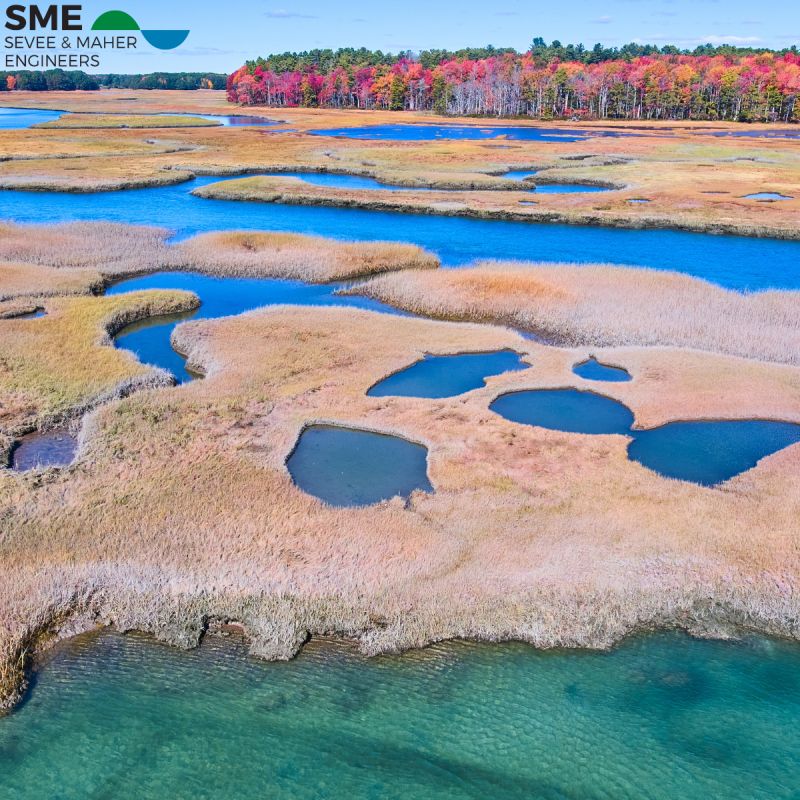Exploring the vital role of Maine’s wetlands in supporting climate resilience and protecting our local ecosystems.
Maine is home to a vast array of wetlands, including over 5 million acres of freshwater types and nearly 160,000 acres of tidal wetland types. These ecosystems, which make up 25% of Maine’s land area, are distributed across the state and are vital components of Maine’s natural landscape.
Wetlands are valuable for several reasons:
- Flood Control: Wetlands act as natural sponges, absorbing excess rainfall and reducing the risk of flooding. This is particularly important in areas prone to heavy rain and storms.
- Water Filtration: Wetlands filter pollutants from water, improving water quality and providing clean water for wildlife and human use.
- Habitat for Wildlife: Wetlands provide critical habitats for a diverse range of species such as birds, fish, amphibians, and plants. These ecosystems support biodiversity and contribute to the health of the environment.
- Carbon Sequestration: Wetlands store carbon helping to mitigate the effects of climate change by reducing greenhouse gas levels in the atmosphere.
Wetlands are Maine’s natural shield for climate resilience, offering numerous benefits that protect our environment and support local ecosystems.
SME is proud to contribute to climate resiliency projects that protect wetlands, such as civil infrastructure design and restoration, by implementing innovative approaches to coastal resiliency and stormwater management that incorporate sustainable and resilient stormwater measures and minimize capital and operation and maintenance costs. As we continue to face the challenges of climate change and unprecedented weather events, it is essential to recognize and preserve the value of these unique landscapes and our communities.
